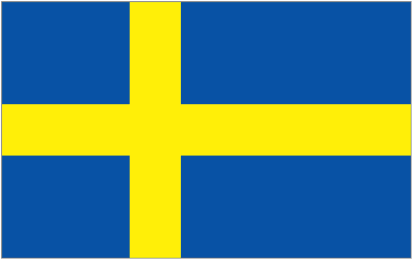There are nine mandatory years of school in Sweden, including an optional grade in kindergarten known as grade 0 that most children choose to take. Schools are divided into low (grades 0-2), middle (grades 3-5), and high school (grades 6-9). Following the first three years of high school is a second high school known as “gymnasium.” Students have to apply to the gymnasium with the grades you got in 9th grade, and there are about 18 different programs to choose from.
About five or six of the programs prepare students for university, while the others don’t. The programs that are not centered around university preparation range from tourism to cooking to beauty and do not require a high level of academic education. The ones that help to prepare for university are a bit tougher. These programs include science, social science, economy, and technology and are more specific to one area.
After three years at the gymnasium, students apply to university where they really choose their future profession(s). Universities typically function in the same way as universities in the US. Entrance into a university is decided by either grades or by taking a certain test. Unlike in the US, only grades are considered when applying. Thus, there are no benefits from doing any sports or outside school activities. There is no such thing as a GPA or ACT/SAT. There is standardized testing in a few grades to be able to compare different areas and teachers to each other, but they don’t impact student grades very much.
The first grades are received in sixth grade. The grading system is based on a criteria rather than points. The range is from F-A, but there are no + or – (meaning ‘the middle grades’ are D and B). For example, a typical English class would include multiple criterias such as speaking, writing skills, grammar, etc. For a student to get an A, they need to fulfill each criteria on the A level. For instance, if a student has A’s in all criterias but one, the grade will be a D. This makes it way harder to get an A than the percentage system in the US, which is why there is no need for extracurriculars, because only a few students will have straight A’s when applying to schools.
Tests are usually a mix of open ended questions and short answers. Multiple choice and true and false questions are not as common. Students usually say that they are stressed because they always have to perform at their best due to this grading system. However, the homework load is much less than in the US. Since sports are not part of the school, only the best athletes do sports when they are in high school. This gives students more freedom and more time to do their homework.
Unlike RHS and many other high schools where each class is made up of different students, the same group of people go to almost all classes together. This results in much closer bonds between students. This is an aspect of school that is quite different at RHS because it is much more difficult to get to really get to know all your classmates. Unfortunately, because you are so close to your classmates, this can sometimes lead to students being rude to teachers. Furthermore, teaching is not a respected profession in Sweden, making it all the more difficult to find particularly good teachers. With that said, students attitude towards school can be quite negative, many of whom question the importance of what they are learning. Even so, most students study, pass school, and get good jobs.
Lovisa Sjolander
staff writer

